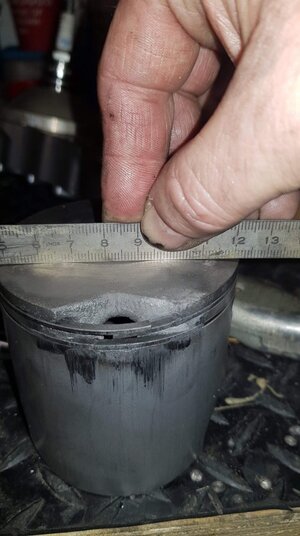I am not very good at short answers, and I am no expert with the 1100. I used
to own a 900, but they are very different. Since the mid 80's I have enjoyed
repairing blown up engines, building pipes, and tuning. But not engine
building.
Was there something different about the air temp, or where you were riding?
I like the hot weather in the desert, The pictures on Facebook look cold

When you rebuilt the engine, did you use oem Kawasaki main seals,
or did you purchase less expensive aftermarket main seals.
They may look the same, but often there is a difference on the vacuum
side of the main seal. That difference will cause the seal to leak vacuum,
but still hold pressure.
Has the engine back fired recently, have you used starting fluid? A front
main seal that has been partially pushed out of the cases would be a real
problem.
Did you disassemble the carbs yet? Any signs of rust or water in the gas?
Has the engine been hard to start after sitting for at least a week? I define
hard starting as trying to start the engine for more than 60 seconds, when
all the fuel has drained from the float chamber. Hard starting, after it
had been running earlier that day is a red flag.
I don't know what the jetting on the 1100, with Yamaha carbs should be. Those
Yamaha 44's are not the same as an aftermarket Mikuni 44sbn. That said, your
jetting seems to be on the rich side. If you account for the high speed screw position
@2 turns, that will equal approximately 8 jet sizes ( I use 1/4 turn per jet size). Your
160 mains with the hi speed screw set @closed would equal 180 mains.
What seat diameter and spring do they use?
Has the carbs been modified (no bomb sight).
Your total fuel (low jet + main jet = x number) seems to be high. An aftermarket
Mikuni will run a total of 260 as a single carb, and dual and triple carbs are normally
less. Maybe ~230 on duals, and ~230 ~220 or so for a triple. Your jet total is 275 to
295 depending on your high speed screw position.
If the impeller size is on the steep side for the application, one of the warning signs
is the main jets are richer than normal, or a tuner may never be satisfied with the jetting.
Bill M.
I am concerned that you may have built the ski for mainly top speed, and the impeller
was chosen for top speed, and that it was possibly 1 size to steep (for your set-up). That
would explain the jetting (unless the carbs are modified), and possibly why it has been
a reliable ski up to this point.




